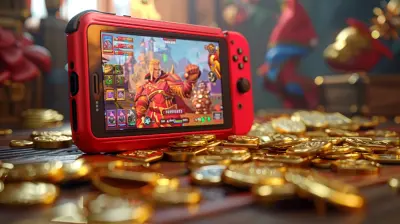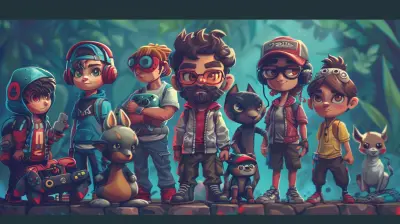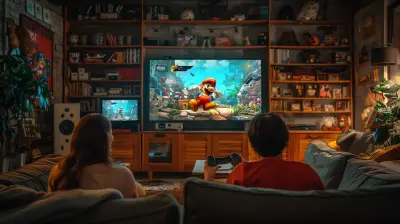Open-World Navigation Systems: How Map Design Guides Player Exploration
20 July 2025
Let’s be real: when it comes to open-world games, there’s just something magical about the freedom of wandering around, getting lost (in a good way), and stumbling upon something incredible. But here’s the thing—this “effortless” experience isn’t as random as it feels. Game developers work meticulously to create navigation systems and map designs that subtly guide us without making it feel forced. It’s like being nudged by an invisible hand, and honestly? It’s pure artistry.
In this article, let’s dive into how navigation systems and map design in open-world games shape the way we explore, how they create memorable experiences, and what makes some stand out from the rest.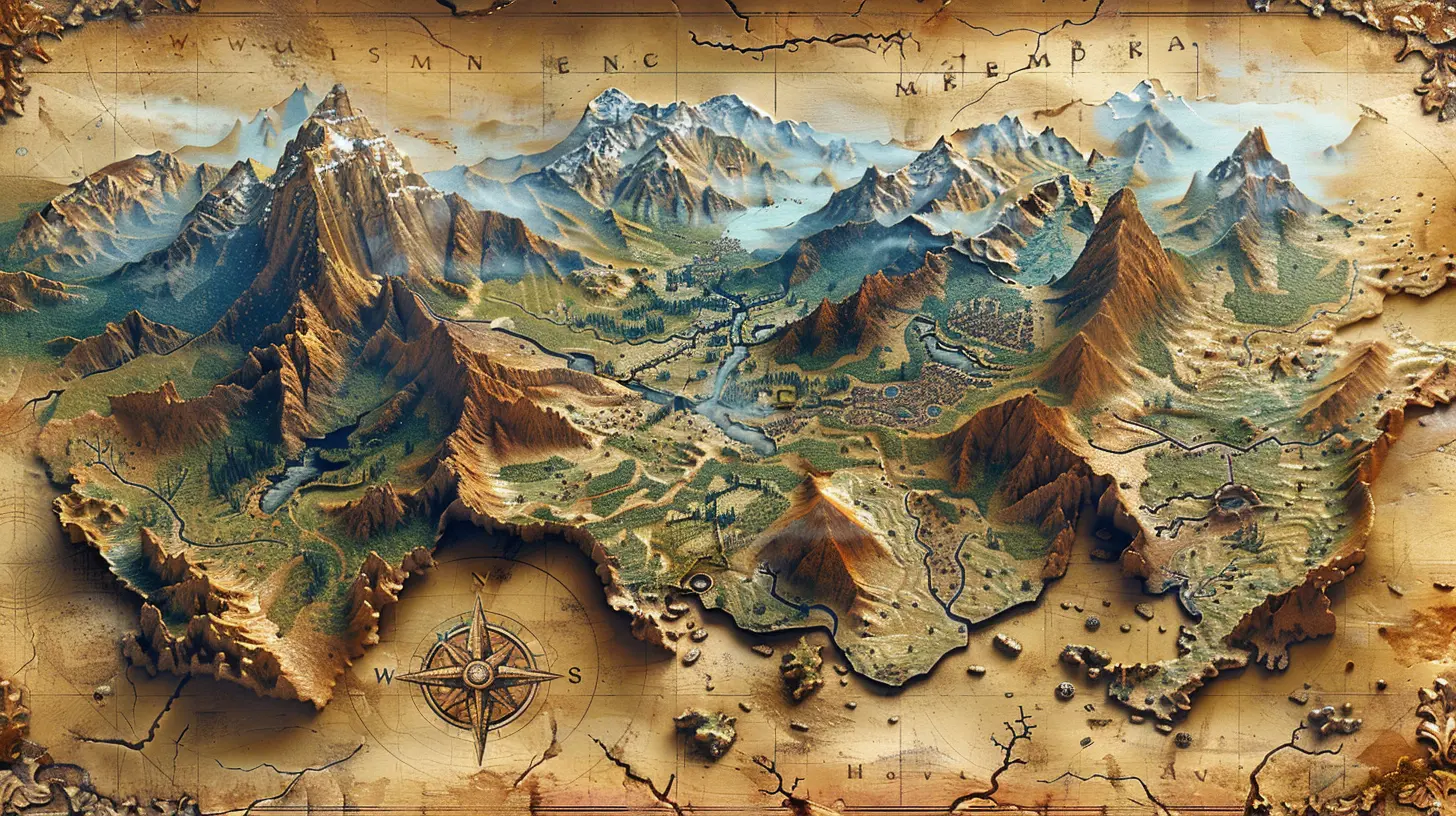
The Importance of Map Design in Open-World Games
Think about the last time you played an open-world game. Maybe it was The Legend of Zelda: Breath of the Wild or Elden Ring. What keeps players engaged in these sprawling virtual worlds? Sure, the gameplay, story, and visual style play a role, but the map design? That’s the unsung hero. It’s what turns a massive "empty" space into a playground of discovery.Let’s break it down. A well-designed navigation system and map ensure two things:
1. Players don’t feel overwhelmed by the sheer scale of the world.
2. Players feel rewarded for going off the beaten path.
Without clear visual and mechanical cues built into the map, even the most stunning open worlds can feel aimless. And let's face it, no one wants to spend hours wandering in circles wondering, Where the heck am I supposed to go?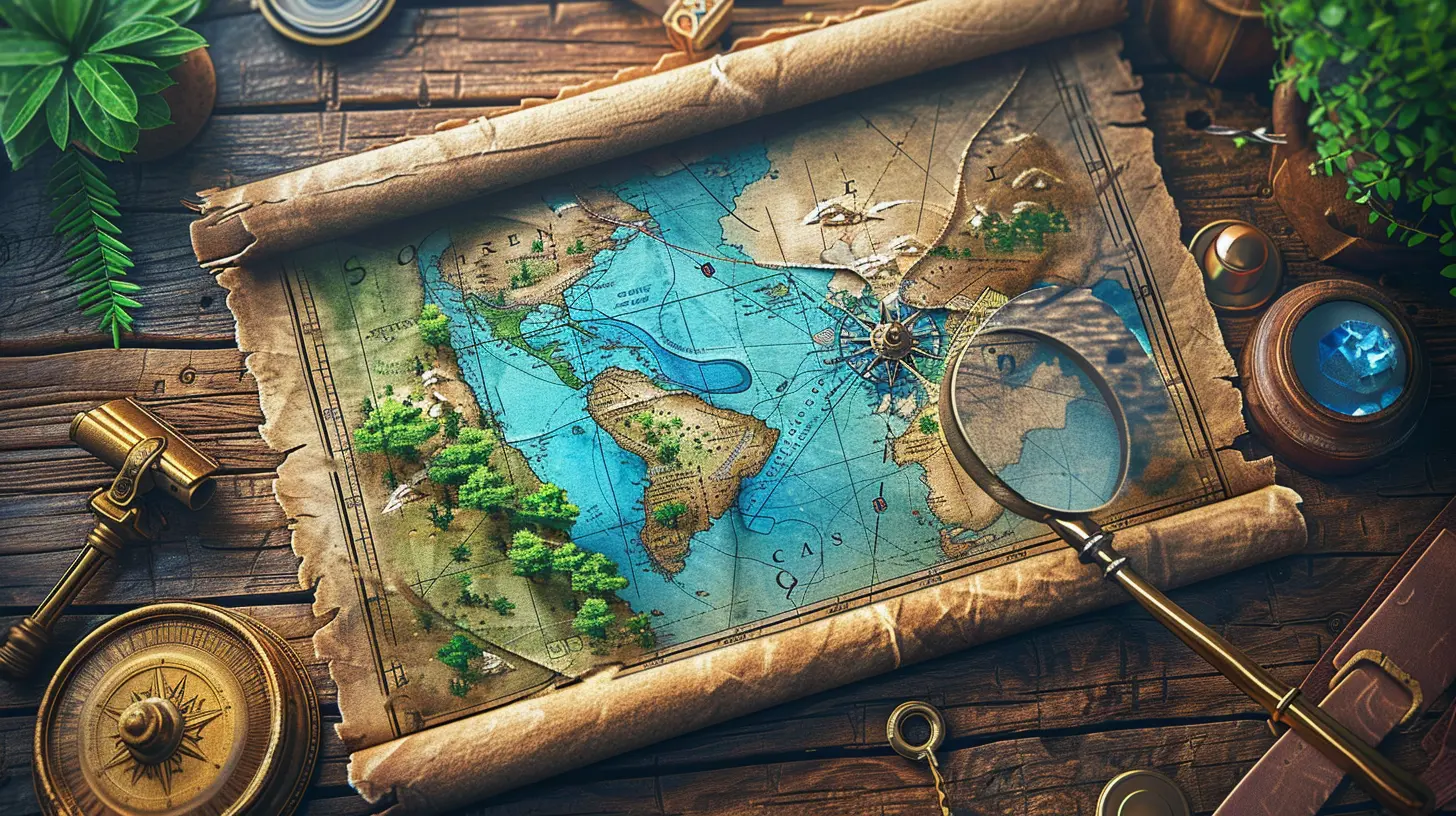
Breadcrumbs: The Art of Subtle Guidance
Great open-world games are masters of "breadcrumbing"—a design technique that plants visual or environmental clues to guide us toward points of interest. It’s like following a trail of breadcrumbs without realizing we’re doing it.Environmental Storytelling
Have you ever noticed how natural features, like mountains or forests, often point you in a certain direction? Game devs use these as landmarks to help you orient yourself. For example, in Skyrim, The Throat of the World mountain is pretty much impossible to miss. Whether you’re nearby or miles away, it helps you figure out where you are.This isn’t just cool—it’s intentional. These landmarks act like a compass, making sure you’re never truly lost. Instead of putting up flashing arrows or obnoxious waypoints, developers let the world do the talking.
Light and Color as Cues
Let’s nerd out a little here. Ever notice how golden light or glowing objects seem to scream, “Hey, over here!”? That’s no accident. Many games use lighting and color contrast to grab your attention. Think of those orange lights marking Grace Sites in Elden Ring or the bright torches leading you to a dungeon entrance. It’s subtle but brilliant!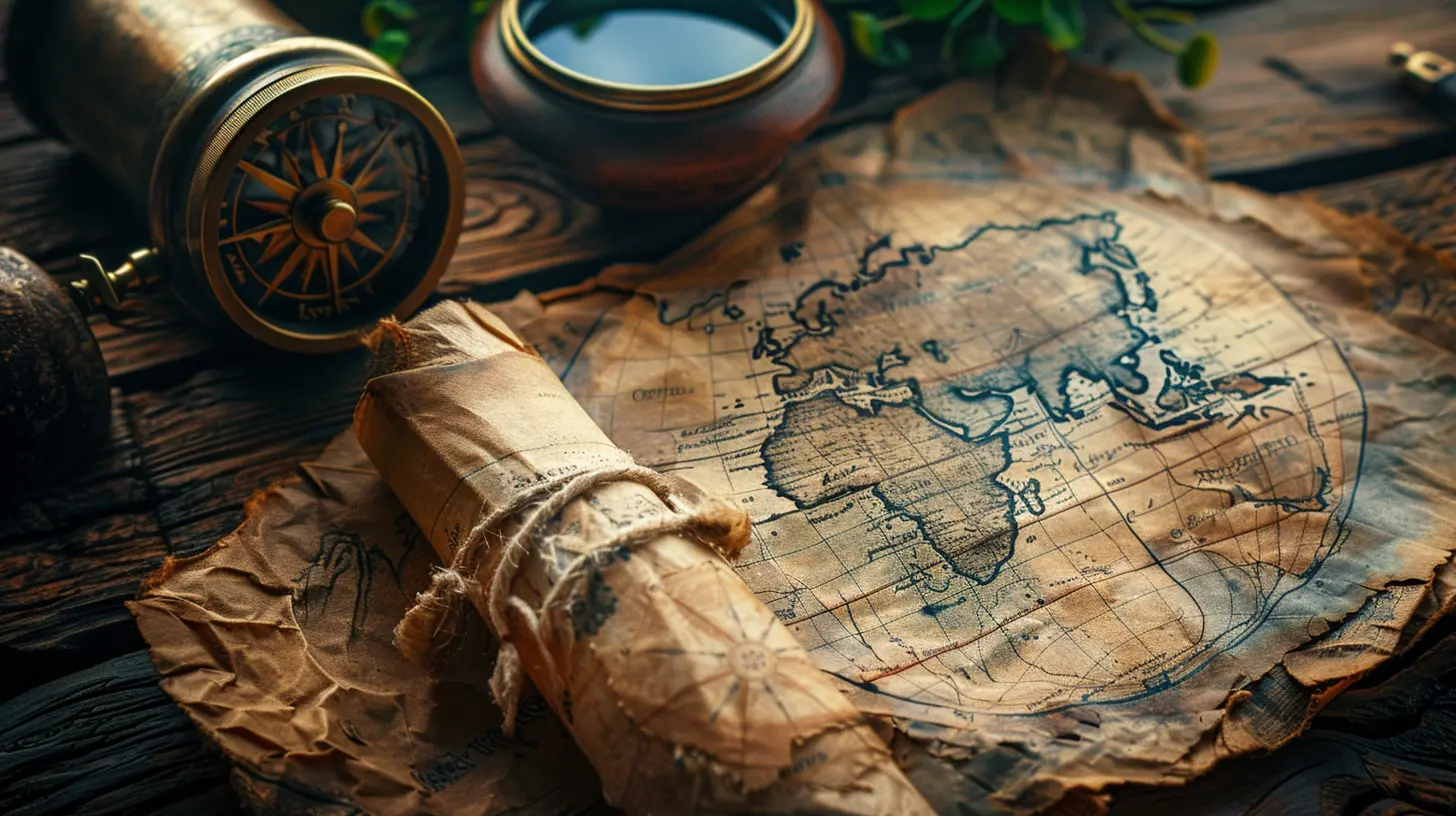
Open-World Maps: Balancing Freedom and Structure
Here’s the tricky part: how do you give players enough freedom to roam without overwhelming them with too many choices? It’s all about balance. Open-world maps are like intricate puzzles where devs have to juggle accessibility, exploration, and challenge.Hub-and-Spoke Maps
A popular approach in modern open-world games is the hub-and-spoke system. Imagine a wheel on a bike. The “hub” is your central safe zone or key location (like a home base), and the “spokes” are paths leading to different areas or objectives. Games like Red Dead Redemption 2 and Assassin’s Creed often feature this system to give players the freedom to explore without feeling untethered.By tethering various regions to a central point, players can explore at their own pace while always having a clear sense of where they can return. This structure is fantastic for pacing because it prevents the map from feeling like a massive, directionless mess.
Progression Through Layers
Another clever tactic involves layering exploration. This is where games “lock” certain areas or challenges until you’ve met specific requirements. You’ve probably encountered this in games like Horizon Zero Dawn, where certain areas are blocked off until you’ve leveled up or unlocked specific tools. This gradual unveiling of the map keeps exploration fresh and thrilling.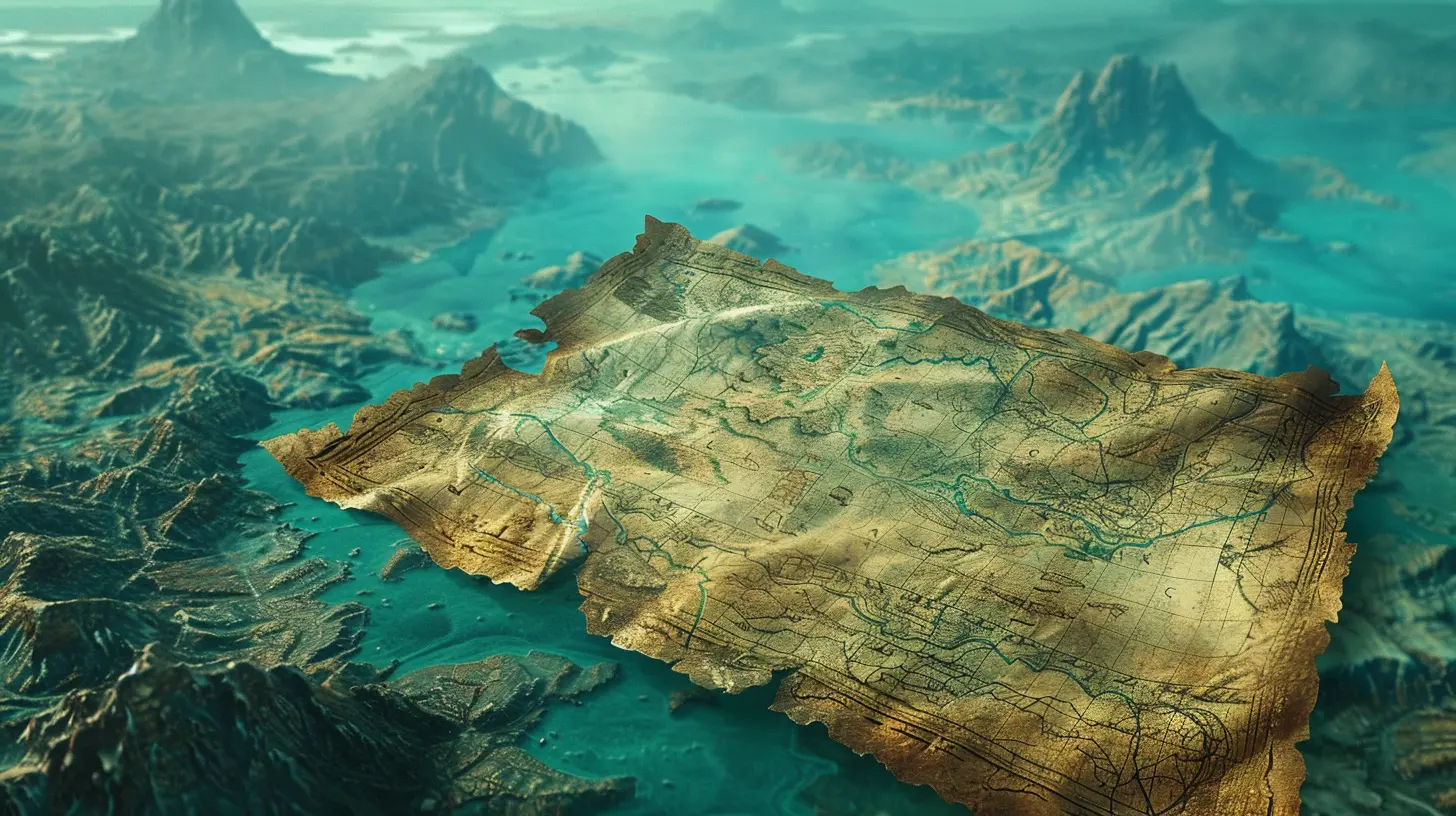
Fast Travel: The Double-Edged Sword of Convenience
Ah, fast travel. It’s the ultimate convenience, but it can also be a buzzkill if overused. Don’t get me wrong—teleporting across a massive map to save time is fantastic. But fast travel can rob you of the joy of discovery, especially when the journey itself is half the fun.So how do devs strike that balance? Many games make fast travel limited or tie it to in-game points. Take Breath of the Wild, for example. You can only fast travel to shrines or towers you’ve already discovered. This encourages exploration early on while still offering convenience later. It’s a win-win!
The Role of Mini-Maps and HUDs: Useful or Distracting?
Let’s talk about mini-maps and HUDs (heads-up displays). These tools can be both helpful guides and immersion breakers. Sure, having a little radar in the corner showing objectives can keep you on track, but stare at it too long, and you risk ignoring the world around you.Games like Red Dead Redemption 2 let you toggle the HUD on and off, giving players the option to fully immerse themselves or rely on visual indicators for navigation. A great open-world game finds a sweet spot here—giving players the tools they need without holding their hand.
Procedural vs. Handcrafted Maps: Does It Matter?
When it comes to map creation, developers typically go with one of two approaches: handcrafted or procedural generation. Each has its perks and pitfalls.Handcrafted Maps
Handcrafted maps are like finely curated art pieces. Every tree, hill, and building is intentionally placed. This approach creates detailed, meaningful worlds that feel alive because, well, someone took the time to craft them with care. Games like The Witcher 3 excel here, delivering a world brimming with history and purpose.Procedural Maps
On the flip side, procedural maps are created using algorithms, which can generate vast, randomized landscapes. While these maps can be endlessly diverse, they sometimes lack the personal touch or logical flow of handcrafted ones. That said, when done well (like in No Man’s Sky), procedural maps can create genuinely awe-inspiring experiences.The Emotional Connection: Why Map Design Matters to Players
Let’s get sentimental for a moment. Good map design isn’t just about navigation—it’s about creating emotional connections. Think about the first time you uncovered a hidden treasure trove, stumbled into a secret cave, or found a breathtaking vista. Those moments stick with you, right? That’s the power of great map design.A well-crafted open world feels alive. It rewards curiosity, making us feel like adventurers charting uncharted territory. And when a game nails this? It leaves a lasting impression.
What Makes Some Open-World Games Stand Out?
Not all open-world games are created equal. The best ones do more than just give us a big map—they turn navigation into an experience. Games like Elden Ring, Breath of the Wild, and The Witcher 3 stand out because they prioritize player agency and discovery.Their navigation systems don’t just guide—they inspire. They don’t scream, “Go here!” Instead, they whisper, “What’s over there?” That sense of wonder is what keeps players coming back for more.
Final Thoughts: The Beauty of the Journey
At the end of the day, open-world navigation systems are about more than just getting from Point A to Point B. They’re about crafting an experience—one that feels organic, rewarding, and tailored to the player. Whether it’s a stunning vista luring you over the horizon or a cleverly hidden path waiting to be found, these navigational elements make every moment in an open-world game feel meaningful.The next time you fire up your favorite open-world game, take a second to appreciate the invisible hand that guides you. It’s a testament to the creativity and care of game developers, ensuring that every step of your journey feels like an adventure of your own making.
all images in this post were generated using AI tools
Category:
Game MechanicsAuthor:

Francesca West
Discussion
rate this article
1 comments
Ximena Wright
Ah, open-world navigation! The fine art of getting lost in a digital wilderness! I love how my character confidently strides into the wild, only to realize he’s 10 feet away from a ‘you are here’ sign. Maybe next time I’ll bring breadcrumbs… or a GPS! Happy exploring!
July 31, 2025 at 4:53 PM

Francesca West
Thanks for your comment! It's true—sometimes the best explorations lead us right back to familiar ground. Happy wandering!
